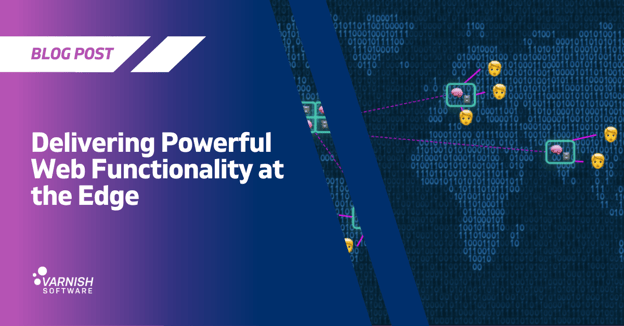In a collaboration with STL Partners, Varnish has released a webinar “From CDN to Edge Content Delivery: Quantifying the Big Opportunity.” STL Partners is a telecoms consulting and research firm, focused on supporting innovation in the telco sphere. In this webinar, we’ve put our heads together with STL to discuss and explain some new trends to watch in content delivery, and the significant opportunity edge computing offers for companies prioritizing low latency and high performance.
You can check out the full webinar here, or if you’re in a hurry, here’s a quick overview of some of the highlights of the discussion.
The edge computing market is about to explode exponentially
STL Partners predicts the edge computing market will grow to approximately $450 billion by 2030. That’s a massive transformation, considering that a handful of years ago no one even knew what edge computing meant. Now, people are coming to recognize the edge as the new cloud: a frontier space where new benchmarks in connection speed can be achieved. While media and entertainment will be the largest sector for growth of edge computing, the edge is seeing adoption in a wide range of industries, including finance, healthcare, transportation, and retail.
Meeting the increasing demands on networks
People are expecting more from the content they consume. Video content accounts for around 70% of online traffic and this percentage is only going to grow. This comes with an increase in the quality of video expected, from 4k to 8k streaming as Ultra High Definition video quality continues to improve. For some networks this creates both uplink and downlink pressure since these UHD videos are also being generated by users. There are new demands for personalization and interactivity in content, from targeted advertising to AR/VR experiences. Customers want all of this, and they want to consume it without latency, from anywhere in the world. This high volume, data rich traffic puts a significant strain on traditional models for content delivery. That’s where the edge comes in.
The benefits of edge computing
The traditional CDN model focuses on a centralized origin server stack that stores all of the content being delivered. When a user accesses that content, they have to send a request all the way to the origin, and then the content they requested has to travel all the way back to them. Depending on how far away from the origin the user is, that can result in latency.
Edge content delivery is more decentralized, supporting your origin server with an array of nodes that sit at the edge of the network, as close as possible to the end user. These nodes cache content so that when the user makes a content request, that request doesn’t have to wait until it reaches the origin, but can instead be serviced by the closest relevant edge node in the network.
This is a far more efficient use of bandwidth, and enables the processing of data at very low latencies. The flexible nature of edge computing means it’s also highly scalable. New edge nodes can be brought online to handle sudden traffic spikes, and can then be spun back down when the high traffic event has passed. This both saves on infrastructure maintenance, and also offers redundancy in case of outages.
Software defined content delivery
As part of the rise of edge computing, Content delivery is breaking free from the bounds of traditional hardware. Software defined content delivery relies on lightweight and easily deployable software to create a more dynamic and flexible content delivery network. Of course, hardware is still vital, but the most powerful modern content delivery software is able to run on a wide range of environments, opening up a CDN’s network configuration options.
Edge delivery with Varnish
As of this moment, Varnish is officially the world’s fastest edge content delivery software, with a record setting benchmark of 1.3 terabits per second per server, with a hyper-efficient energy consumption of 1.17 gigabits per second per watt. Our content delivery software is platform agnostic, able to run on anything, including bare metal, VMs, cloud, and containers. Varnish can be easily integrated into your existing system to make it more efficient, sustainable, and secure.
/VS-logo-2020-197x60.png?width=136&height=60&name=VS-logo-2020-197x60.png)




